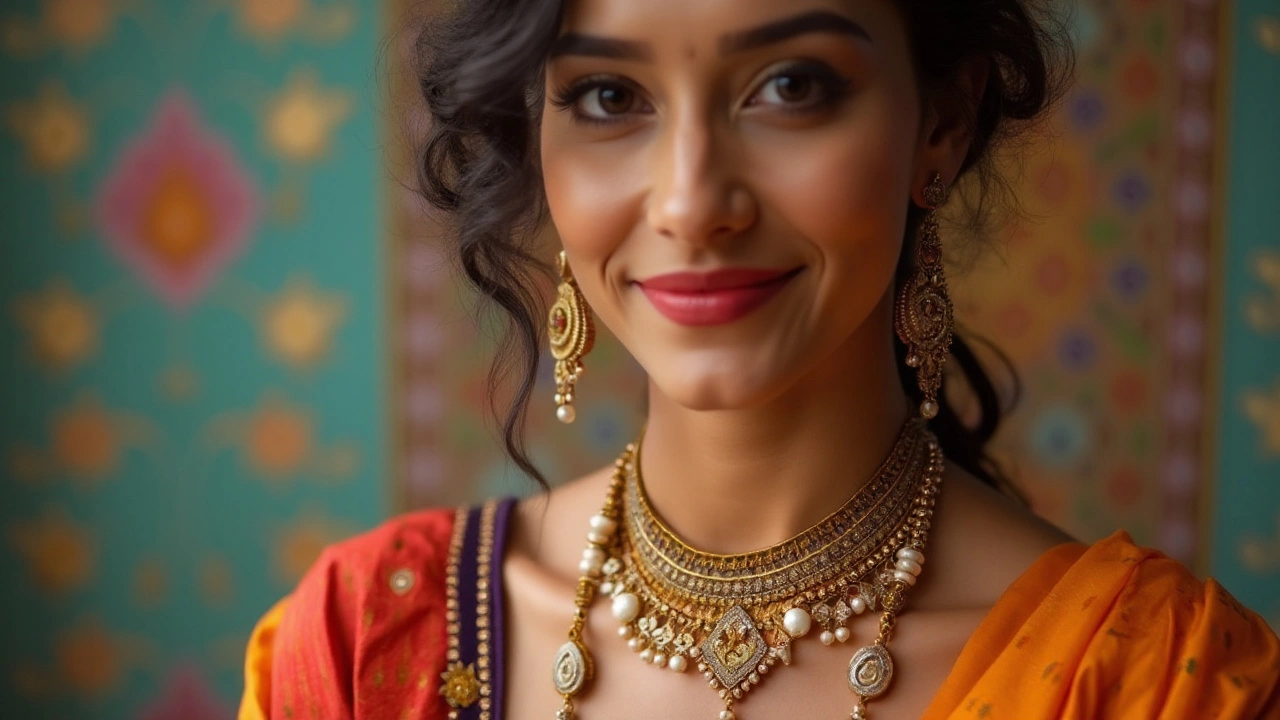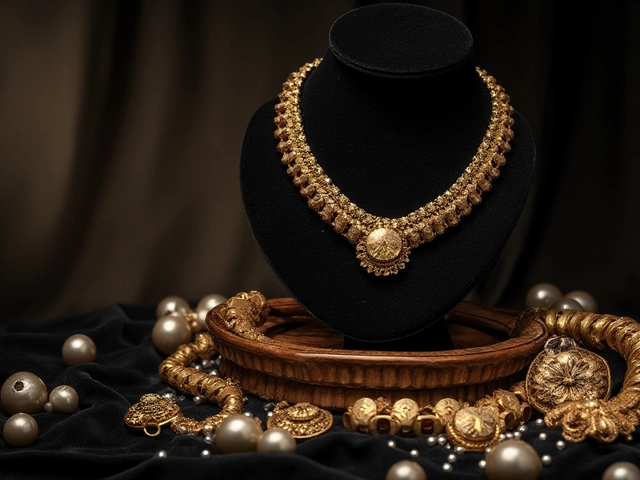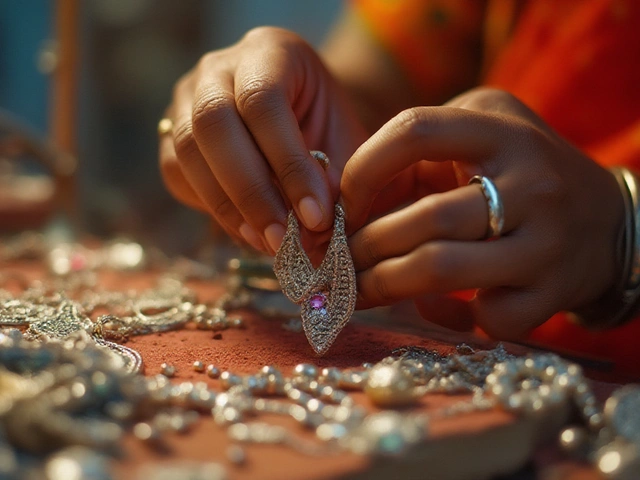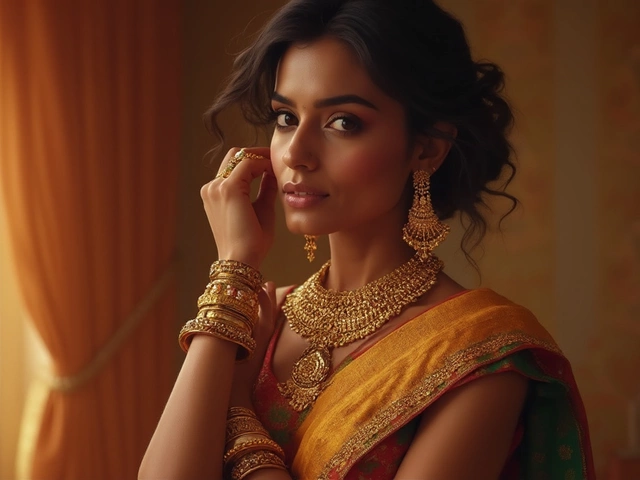When it comes to traditions and symbols in Indian culture, the mangalsutra holds a special place. This sacred necklace is a revered symbol of marital bond for Hindu women, traditionally worn as a sign of being married. But what if a woman chooses to wear two mangalsutras? Is this acceptable within the cultural beliefs or seen as a modern twist?
The idea of wearing two mangalsutras can stem from both cultural pathways and personal expressions. Some women might opt for it to honor family traditions while embracing contemporary fashion trends. Others find it adds a personal touch or simply fulfills a sentimental attachment to different styles. Regardless, the narrative around this practice is far from fixed and opens doors to an intriguing dialogue between cultural norms and individual choices.
In this article, we delve into the historical and cultural relevance of the mangalsutra, contrasting them with current trends and personal expressions that redefine its essence today. Whether you are an admirer of traditional jewelry or someone exploring cultural nuances, understanding these dynamics might bring fresh perspectives on the evolving significance of the mangalsutra in modern society.
- Historical Significance of the Mangalsutra
- Cultural Beliefs and Practices
- Contemporary Styles and Trends
- Personal Choice and Expression
- Practical Tips for Wearing Two Mangalsutras
Historical Significance of the Mangalsutra
The mangalsutra is more than just an ornate piece of jewelry; it is an ancient emblem of marital unity steeped in profound spiritual and cultural meaning. The origin of the mangalsutra can be traced back to the great Sanskrit epics, where it was mentioned as 'Mangalya', a term that signifies auspiciousness. It began as a simple thread smeared with turmeric paste tied around the bride's neck on the wedding day, symbolizing a promise of companionship and safety. Over centuries, this tradition evolved, and today it is commonly crafted from black beads and gold, meant to ward off evil while signifying the strength of the marital bond.
The black beads of the mangalsutra have always been considered potent protectors against negative energies and envious glances. Hindus believed these beads bore the power of the goddess Shakti and safeguarded the wearer’s marital bliss. In addition to spiritual protection, they symbolize the strength and resilience of a woman's love towards her husband. A fascinating aspect of the mangalsutra's history is its regional diversity in India, each region incorporating its own unique twist to the design. While South Indian mangalsutras might feature intricate gold patterns, those from the North could be heavily embedded with symbolic charms and stones.
"The mangalsutra is more than an ornament; it embodies the sanctity and strength of the marital relationship," wrote renowned historian Dr. Ashok K. Tandon in a study exploring traditional Indian jewelry.
The symbolism associated with the mangalsutra has adapted to the changes brought by time, yet it remains deeply revered in many households. During weddings, the tying of the mangalsutra is considered one of the pivotal moments signifying the transition to married life. The responsibility of placing the mangalsutra is customarily the privilege of the groom and is accompanied by sacred rituals and mantras aimed at lifelong blessings. By wearing this mangalsutra, a woman not only honors her commitment but also participates in an age-old ritual connecting generations of women across time and geographies.
The evolution of the mangalsutra into various designs and its reinterpretation by modern jewelry makers have kept this tradition alive. Today, while some women opt for traditional designs, others may select styles that blend modern aesthetics with symbolic reverence. Despite modern influences, the heartfelt intention behind the mangalsutra remains untouched. It continues to be a cherished token of love, protection, and cultural identity for millions, echoing stories of the past while embracing the present.
Cultural Beliefs and Practices
The mangalsutra, a deeply ingrained symbol within Hindu culture, is much more than a mere piece of jewelry. It is a necklace tied by the groom around the bride's neck during the wedding ceremony, marking the beginning of their marital journey. Traditionally, this sacred thread has been cherished as a representation of love and commitment. Wearing a mangalsutra is not just about embracing matrimonial ideals; it also serves as a physical manifestation of spiritual beliefs, where the black beads are often equated to a protective shield against evil eyes, according to ancient lore.
Culturally speaking, each region in India adds its unique twist to the mangalsutra design. In Maharashtra, for instance, the mangalsutra typically features two hollow gold vatis—symbolizing the unity and prosperity of the couple. Similarly, in states like Tamil Nadu and Andhra Pradesh, the Nugget-thali or Thaali kodi is laced with significant symbols like carvings of gods and goddesses, which hold spiritual importance. The mangalsutra designs have evolved over generations, yet the core essence of this tradition remains resiliently intact.
The question of whether a woman can wear more than one mangalsutra ventures into the territory of evolving cultural practices. While traditionalist views might lean towards wearing a single mangalsutra as it solidifies the singular bond of marriage, modern interpretations are more flexible. In certain South Indian communities, wearing additional simpler mangalsutras as a mark of continuation of the bond in family traditions is both accepted and respected.
"In many parts of India, multiple mangalsutras are worn during certain festivals to honor family customs, which often highlights the fluidity and adaptability of such cultural symbols," explains sociologist Dr. Anita Naik.
Additionally, the fusion of tradition with modern needs has seen the emergence of lighter, more minimalist mangalsutra designs, which blend effortlessly with contemporary attire. Women today, driven by personal choices and changing societal norms, might wear two mangalsutras—one for traditional ceremonies and another as a daily fashion accessory. This practice, while upholding the sanctity of the tradition, embraces a broader aesthetic and lifestyle appeal. It reflects the dynamic interplay between upholding cultural values and embracing personal style and ingenuity, which is a testament to the evolving nature of cultural expression.
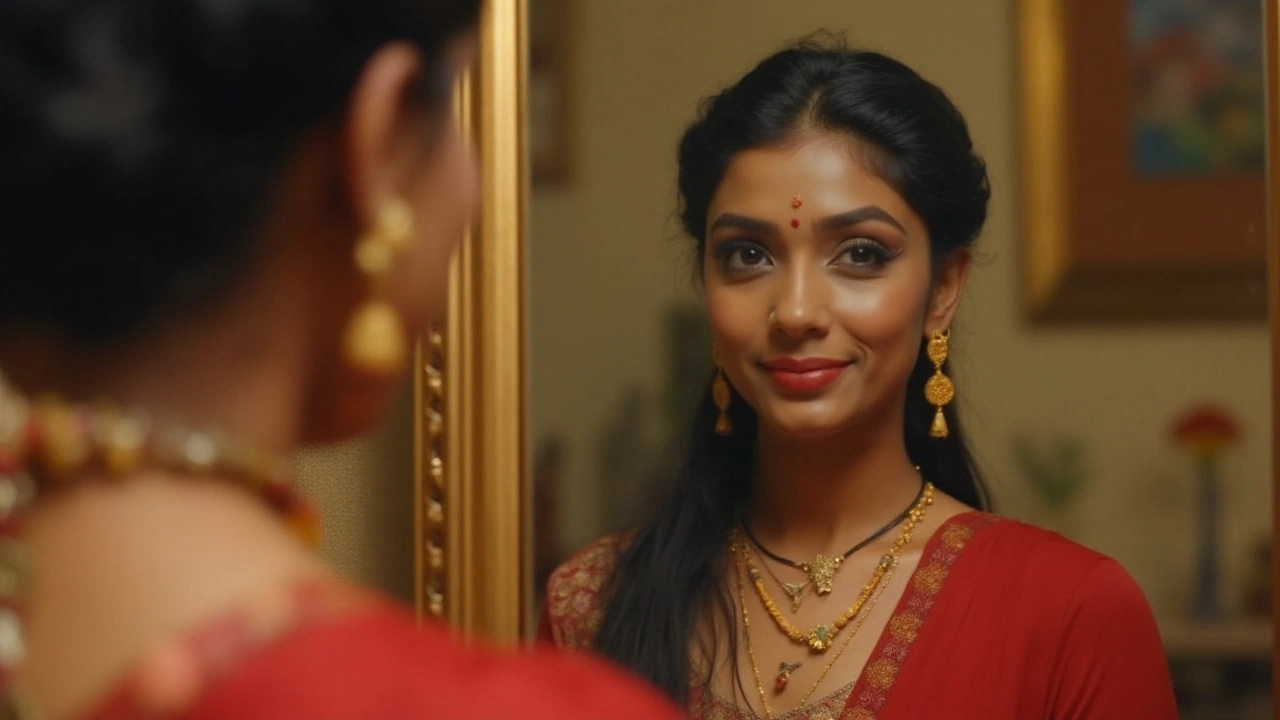
Contemporary Styles and Trends
In today's fashion landscape, the mangalsutra designs are no longer confined to traditional motifs and simplicity. The contemporary woman is all about making bold choices that reflect her personality through her jewelry, and the mangalsutra is no exception. The trend of wearing two mangalsutras is a fascinating case of blending history with modern fashion statements. Women today are increasingly looking at the mangalsutra as not just a traditional symbol but as a versatile piece of ornamentation that can be styled differently to match their changing wardrobes and lifestyles. This dual mangalsutra trend is gaining traction among those who wish to honor their roots while experimenting with modernity.
The diversity in mangalsutra designs has also contributed substantially to this trend. Jewelry designers are continuously innovating, introducing sleek, contemporary styles that resonate with today's simplistically chic aesthetic. These designs often incorporate minimalist elements or bold, eye-catching pendants that can be effortlessly coordinated if one decides to wear them in pairs. The dual mangalsutra look is sometimes achieved by wearing one that suits traditional attire while another complements modern outfits. This way, the woman can maintain the significance of the mangalsutra yet enjoy a varied palette for different occasions.
Interestingly, some women are resorting to this trend not just for aesthetics but to express sentiments or stories that two pieces symbolize together. Each mangalsutra may embody a special moment or relationship. The emotional connect sometimes attached is powerfully personal, transforming the practice into something transcendental beyond fashion. A notable perspective from jewelry designer Anita Dongre mentioned in a recent fashion conclave captures it vividly:
"Jewelry is deeply personal; combining tradition with modern elements allows women to relate better to their roots while expressing unique personal narratives."This evolving dynamic is definitely a step away from rigid customs towards a more personalized and relatable form of tradition, designed by individual choice.
In addition to these personal choices and trends, the demand for two mangalsutras has also been influenced by significant occasions such as anniversaries or family-related milestones, where one might receive another as a commemorative gesture. The value placed on handcrafted or intricately detailed designs makes them worthy companions, thus augmenting their presence as paired elements in one’s jewelry collection. It is not unusual for women to choose a subtle, everyday mangalsutra for daily wear and a more intricate, expensive piece reserved for special occasions. Notably, it's this pragmatic dichotomy in purpose that fuels the trend.
When considering the practicality of wearing multiple mangalsutras, individuals should take into account their lifestyle and ensure that the jewelry reflects both their daily activities and occasions. Here are a few tips for those looking to embrace this trend effectively:
- Choose designs that are distinct yet harmonious to avoid a clashing look.
- Be mindful of the combined weight and ensure comfort for prolonged wear.
- Consult with a jeweler to personalize the pieces to maintain a coherent style.
Personal Choice and Expression
The decision to wear two mangalsutras is often deeply intertwined with a woman's personal journey and outlook on life. Some women find comfort and self-expression in combining different styles that reflect both tradition and modern flair. This choice can be a fusion of cultural symbolism and personal identity, as one mangalsutra may be inherited or traditionally significant, while another could be chosen for its design or emotional meaning. Wearing more than one mangalsutra can also be seen as an embodiment of one's individuality, where every piece tells a distinct story about their life and experiences.
Traditionally, a mangalsutra is gifted by the husband, representing the sacred vow of marriage and the bond between husband and wife. However, as societal norms evolve, there is an increasing trend towards personalization. This transformation is an expression of a woman's autonomy over her style and traditions. By donning two necklaces, a woman might be celebrating parts of her identity that align with different aspects of her life. For instance, one could be a gift from her maternal family, representing her upbringing, while the other from her partner, symbolizing her new journey.
Embracing two distinct mangalsutra designs can also reveal how modern women navigate cultural expectations while asserting their sense of self. This expression of individuality does not necessarily dismiss tradition but rather adapts and enriches it, allowing for a broader spectrum of self-expression within traditional boundaries. It highlights a broader acceptance of personalized traditions across various communities, shedding light on the shifting dynamics of cultural practices in a modern context.
"Jewelry is like the perfect spice, it always complements what's already there," said Diane Von Furstenberg. This essence of complementing personal style is remarkably visible among women choosing to wear two mangalsutras, as it sheds light on the harmonious blend between tradition and contemporary fashion.
Amidst the myriad reasons a woman might opt for two mangalsutras, practical aspects also play a significant role. Some designs are suited for daily wear, known for their durability and simplicity, while others might be more ornate, saved for special occasions. This duality of purpose not only fulfills a need for functional versatility but also enriches the visual and symbolic appeal of wearing the mangalsutra. Thus, the practice caters beautifully to those who wish to encompass both utility and elegance, allowing the wearer to switch effortlessly between varied settings without losing connection to their cultural identity.
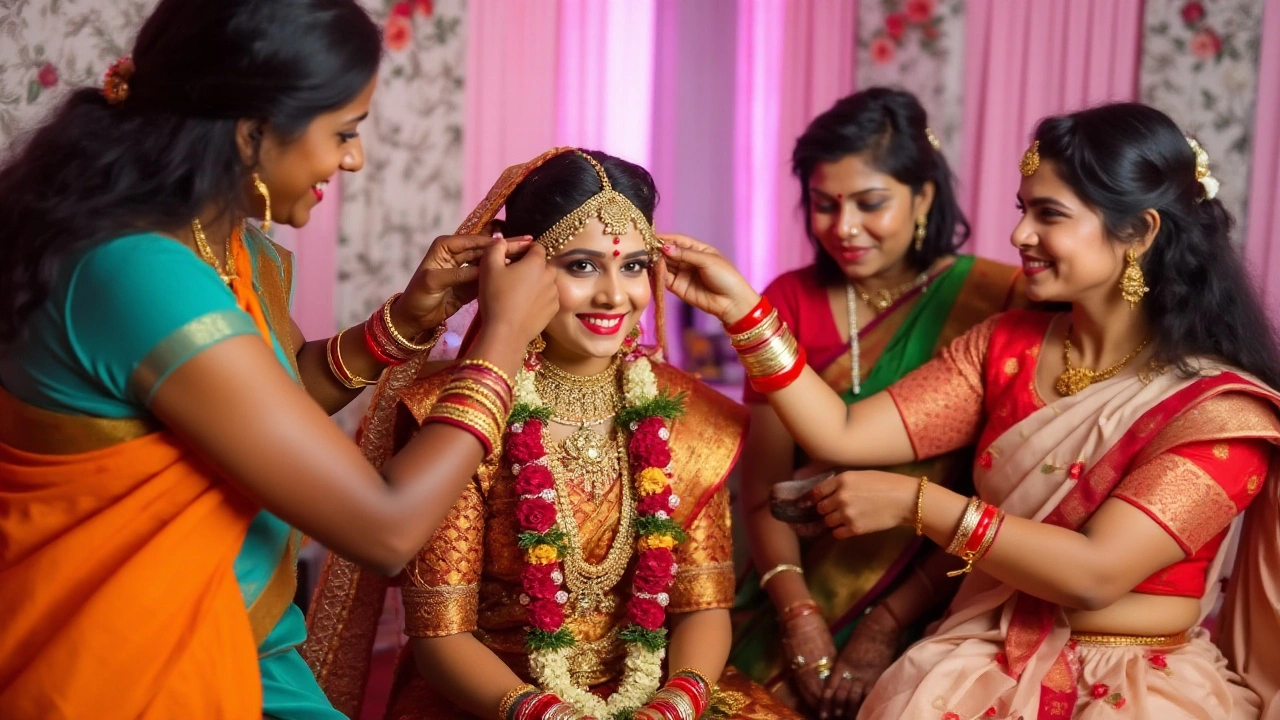
Practical Tips for Wearing Two Mangalsutras
The notion of adorning two mangalsutras might sound quite intriguing and stylish, yet it comes with its own set of challenges and joys. To carry off the look elegantly, there's a fine balance between tradition and personal preference that needs consideration. History, aesthetics, and the physicality of wearing two pieces of significant jewelry all come into play. But many women who choose this path do it gracefully, paying respect to the ceremonial significance while enjoying the aesthetics.
When venturing into wearing two mangalsutra designs, the first aspect to consider is the weight and ease of wear. Mangalsutras vary in size and weight, impacted by the materials used, such as gold or black beads, and any additional embellishments like diamonds or precious stones. Hence, selecting ones that complement each other in design while being comfortable enough for daily wear is crucial. Weight management is important to ensure that neither piece causes strain on the neck.
Coordinating Designs and Styles
Styling them right is about harmonizing the two pieces, so they resonate as a part of a single ensemble rather than disparate entities. A harmonious blend can be achieved by selecting designs that are either identical or complementary. If one mangalsutra features intricate details, while the other maintains simplicity, the contrast might also enhance each piece uniquely. Designers often recommend pairing traditional motifs with more contemporary styles, creating a modern take that's rooted in heritage.
Understanding the various styles available in the market is essential. For the uninitiated, mangalsutras can range from classic styles featuring bold black beads and gold pendants to sleek, modern designs with diamond accents. Mixing a traditional piece with a minimalist design can embody both generational respect and a nod to modernity, crafting a look that feels both timeless and current.
"The dual-wearing of mangalsutras can be seen as a celebration of heritage fused with personal innovation," says Neelam Kothari, a noted jewelry designer famous for incorporating traditional elements into modern designs.
Match Your Attire
Another critical factor is how these pieces integrate with your daily attire. Wearing two different mangalsutras naturally draws attention to the neck and collar area, demanding a thoughtful selection of clothing necklines. V-neck or scoop neck blouses often work well, as they complement the fall and placement of two necklaces, allowing them to drape naturally without tangling.
Layering, a current trend in fashion, can be an effective technique for styling mangalsutras. The two pieces can be of varying lengths, creating a layering effect that is both chic and culturally reverent. This layering not only helps in showcasing each piece individually but also brings a sense of depth and richness to the overall outfit.
| Criteria | Considerations |
|---|---|
| Weight | Opt for lightweight combinations for comfortable all-day wear. |
| Design | Choose complementary or contrasting styles for a unique look. |
| Placement | Vary lengths for layering and visual interest in styling. |
| Attire | Pair with suitable necklines to accentuate the pieces. |
In summary, wearing two mangalsutras is as much an expression of personal style as it is of tradition. It's an evolving trend that allows women to express their identity while still respecting cultural norms. With a thoughtful approach to design management and coordination with attire, any woman can look elegant and modern carrying this dual heritage symbol.
